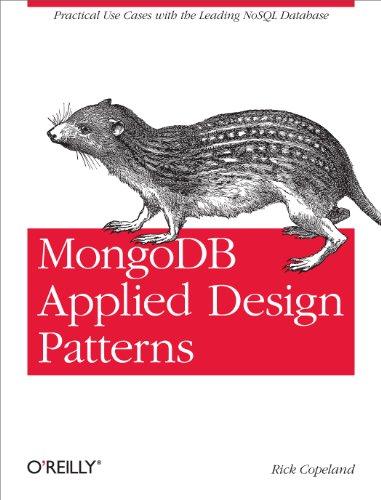Question
Fuzzy Logic Radio (NYSE: FUZZ) is medial management company with a number of traditional (terestrial) radio stations as well as a number of Internet (streaming
Fuzzy Logic Radio (NYSE: FUZZ) is medial management company with a number of traditional (terestrial) radio stations as well as a number of "Internet" (streaming only) stations. Fuzzy Logic maintains a database to track their properties, rooms, bookings, and employees. Assuming you have entities for:
STATION - one row per station
ARTIST - one row per Artist
SONG - one row per Song
PLAYLIST - one row per playlist (which contains a set of Song's)
EMPLOYEE - one row per employee working for Fuzzy Logic.
1. Using the above entities, describe a 1:M relationship and a M:N relationship. How about a 1:1 relationship? For this item, describe the relationships in terms of business rules. Remember that business rules should describe both sides of the relationship and should be able to be used to directly create the ERD. For example, suppose you have a CUSTOMER entity and an ORDER entity. A business rule might be:
A CUSTOMER may have zero or more ORDERs. A specific ORDER is for one and only one CUSTOMER.
From this example business rule we know that CUSTOMER:ORDER is 1:M. (The second sentence makes the '1' side.) We also know that ORDER is optional to CUSTOMER and thus would have a O on the ORDER side when drawing the Crow's foot. Since CUSTOMER is mandatory to ORDER we would see the | on the CUSTOMER side of the Crow's foot.
An example of a many to many relationship and the associated business rule: A STUDENT may enroll in one or more CLASS_SECTIONs. A (specific) CLASS_SECTION may have zero or more STUDENTs enrolled in it.
From this we know that STUDENT:CLASS_SECTION is M:N. Without understanding both sides of the business rule we wouldn't know for sure if it were 1:M or M:N.
2. Create an ERD using the relationships described in 1. Use Crow's foot notation for this.
3. If you were to covert the model as described in 2 to a set of tables and their relationships (i.e. a relational schema), what would the attributes for each of the entities be?
Note: There are a variety of tools which can be used to generate an ERD (including pencil on paper). However, you might want to use Oracle SQL Data Modeler, which is available for free (after registration). Since you will eventually need to also download SQL Developer and Oracle database xe (which are also free), using SQL Data Modeler is the preferred approach. However, there is a learning curve associated with this tool, so your emphasis on this assignment is to get it done (even if you have to use paper and scan it to pdf) vs. spending tons of time learning the tool. If you do use paper, I MUST BE ABLE TO EASILY VIEW IT.
Thank you to anyone reviewing the question.
Step by Step Solution
There are 3 Steps involved in it
Step: 1

Get Instant Access to Expert-Tailored Solutions
See step-by-step solutions with expert insights and AI powered tools for academic success
Step: 2

Step: 3

Ace Your Homework with AI
Get the answers you need in no time with our AI-driven, step-by-step assistance
Get Started


